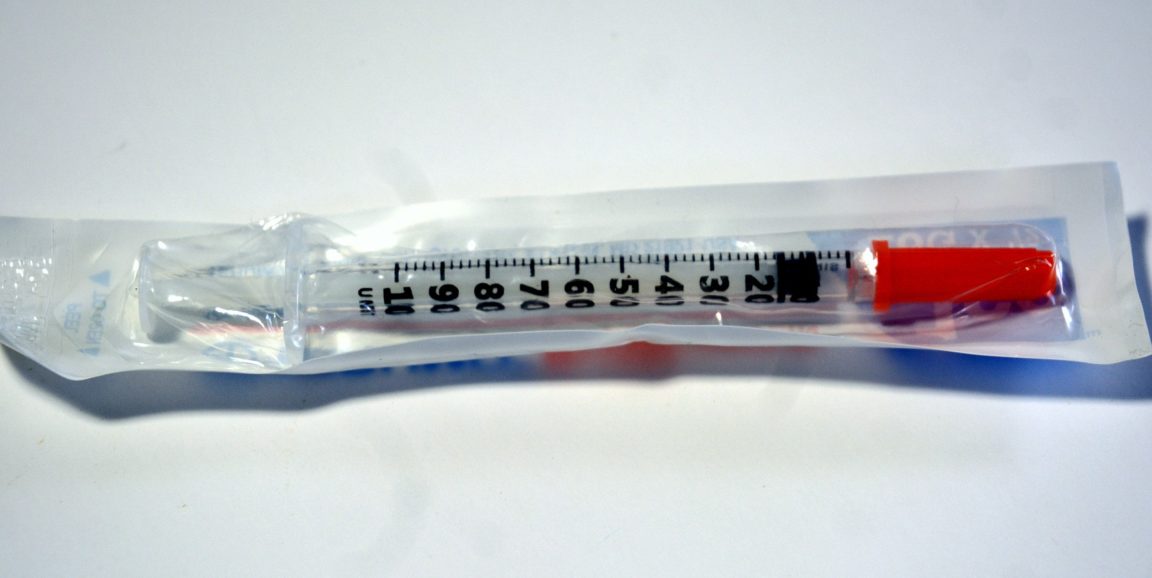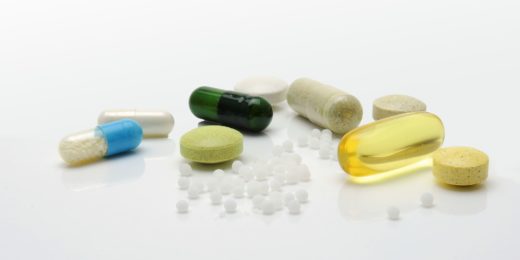During my medical training in the 1990s, I was taught that insulin was a last resort after patients with Type 2 diabetes had “failed” oral medications, meaning their blood sugar remained worryingly high.
Insulin was disliked because patients were fearful of injections and physicians wanted to avoid making complicated prescribing decisions, as each person needs a slightly different level of insulin to maintain stable blood sugar levels. While “insulin means failure” attitude still persists, today insulin is used earlier and often combined with other blood-sugar lowering medications.
Earlier in this series, we met Mrs. R, a 70-year-old with diabetes, whose experience with insulin medications is common:
At first, she used oral medications added one after another to keep her blood sugar under control. Eventually, these medications were not controlling her blood sugar. A long-acting, once-a-day form of insulin called glargine was started. Now, she remains on metformin as well with her hemoglobin A1c (a measure of long-term blood sugar control) perfect at 6.7 percent.
Insulin is a critical hormone first isolated and tested in 1921. It revolutionized the lives of people with Type 1 diabetes, who are unable to produce insulin. With insulin, they could survive more than a few months. While those with Type 2 diabetes don’t depend on insulin, it is the most powerful drug available to treat Type 2.
Insulin can’t be taken as a tablet by mouth because the insulin molecule is too large to be absorbed and the stomach’s enzymes would digest it. While many patients fear starting insulin due to the injections and the greater need for finger sticks to monitor blood sugar, insulin’s incredible ability to lower blood sugar makes these injections worth it. Most patients continue taking selected oral medications, making it easier to start taking insulin and reducing the amount needed.
As a Type 2 diabetes drug, insulin’s big advantage is that it adds to the body’s own strategy of increasing insulin levels to overcome the insulin resistance. External insulin can be injected at levels higher than our bodies can produce. There is no upper limit on insulin’s blood sugar reducing potential, unlike other medications.
This same power to lower blood sugar also makes insulin potentially dangerous, however. Too much insulin leads to low blood sugar (hypoglycemia), which commonly causes irritability, sweating and impaired thinking, but can also lead to seizures and even death. Insulin causes weight gain and damages the lining of arteries, raising already high rates of heart disease and stroke.
In my experience, I start insulin when three oral medications aren’t lowering blood sugar sufficiently. There is an astounding array of different forms of insulin available, but the long-acting insulins are the most useful initially. About 30 percent of patients with diabetes use insulin.
Source of insulin: In the old days, insulin was made from cattle or pig pancreas. Today, all insulin is made by recombinant technology where bacteria are given DNA instructions for making insulin. The newest advance is modifying the insulin molecule to create “synthetic analogs” of insulin with special properties such as slow release.
Duration: Natural insulin works quickly, but only lasts a couple of hours. The duration of action can be lengthened by either mixing natural insulin with other materials to delay its release or modifying the insulin molecule so it works more slowly. Insulins are available that last an hour (to be used with meals such as lispro) or more than 24 hours (to be used as a once-a-day insulin such as glargine).
Delivery: Insulin needs to enter the bloodstream to work. This is usually done by injection just under the skin using a prefilled, insulin pen device. A few people have insulin pumps which continuously supply insulin beneath the skin. An inhaled version of insulin was briefly available in the mid-2000s, but never caught on because of problems with dosing.
Cost: Generic insulin is not available because of the complicated technology needed to manufacture it, but there is still a huge cost range for insulin. Older, less commonly used forms of natural insulin are inexpensive (Novolin N brand is about $36 retail for about a month’s supply). Established insulin analogs (again, used by cells like natural insulin, but with small changes) in pen devices are typically $200-300 per month (Lantus brand glargine). Newer forms run up to $500 (Tresiba, degludec). The most expensive are new formulations that combine insulin with another class of diabetes drugs called incretins ($1,000 for Xultophy).
All of these expensive drugs are very profitable and it’s hard to justify these exorbitant costs based on clinical effectiveness, especially since I've seen prices rise five-fold in the last decade.
In my view, insulin is underused in treating Type 2 diabetes. Increasingly useful forms of insulin and more comfortable injection methods make insulin anything but a last resort. Unfortunately, these innovations are costly to consumers and health care payers. These high costs are a reminder that more effort and resources should go to diabetes prevention and to strategies that lower the risk of heart disease and stroke in people with diabetes.
Image by iggy7117
Randall Stafford, MD, PhD, a professor of medicine and director of the Program on Prevention Outcomes and Practices, practices primary care internal medicine at Stanford. He is developing practical strategies to improve how physicians and consumers approach chronic disease treatment and prevention.
This is the seventh piece in a series, “Breaking Down Diabetes,” created for those with or at risk for diabetes as well as their family and friends. Previous blog posts addressed the pre-diabetes, diabetes complications, and goals for diabetes management beyond blood sugar. Some data for this report come from IQVIA, Inc., previously known as QuintilesIMS. For additional information, please contact rstaff@stanford.edu.





